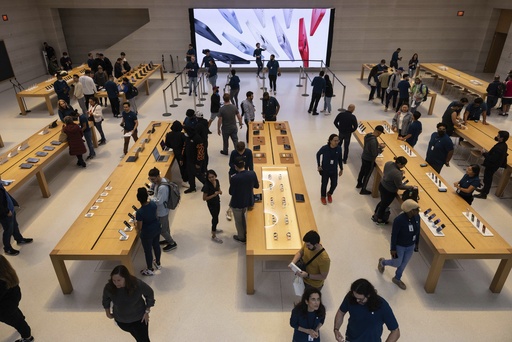
WASHINGTON — A surprising trend has emerged as many Americans continue to spend robustly at retail stores and restaurants despite being impacted by high prices. The primary factor driving this phenomenon appears to be the wealthier segment of the population, who have benefitted from notable increases in income, home equity, and stock market gains. This shift, highlighted by Federal Reserve research, marks a departure from spending patterns seen before the pandemic. It suggests that consumer expenditure, which is a crucial component of the U.S. economy, may contribute to solid economic growth both this year and the next.
On the other hand, lower-income consumers are facing significant challenges due to escalating prices for necessities including housing and groceries. This pressure limits their ability to spend on non-essential items such as electronics and dining out. While spending among this group is beginning to recover as real incomes improve, full financial recovery may take several years. These disparities between income groups help to clarify the disconnect observed between negative consumer sentiment and positive indicators of a healthy economy, a dynamic that figures prominently in the current presidential election cycle.
The economy’s steady expansion can also be seen even with the Federal Reserve maintaining its highest key interest rates in over 20 years until recently. The significant rise in borrowing costs on mortgages, auto loans, and credit cards has not deterred inflation-adjusted consumer spending, which increased by 3% in 2022 and 2.5% in 2023. Additionally, a report indicated that consumer spending expanded at a 2.8% annual rate during the second quarter of the year.
Recently, the Commerce Department announced a 0.4% increase in retail sales from August to September, a sign that consumer confidence in the economy remains strong. Specifically, restaurant sales saw a 1% rise, indicating people feel secure enough to enjoy meals out. The Federal Reserve Bank of Atlanta now estimates robust economic growth of 3.4% for the July-September period.
High-income households have experienced significant improvements in wealth through rising housing and stock market values since the pandemic began. Housing prices have surged, driven by strong demand and limited supply, while the stock market has consistently reached new highs — with the S&P 500 index up 22.5% this year. Notably, approximately 80% of the stock market wealth is concentrated within the top 10% of U.S. households.
This wealth bolstering has reduced affluent Americans’ need to save from their paychecks while encouraging increased spending. According to a recent report by Federal Reserve economists, prior to the pandemic, retail spending had been growing evenly across income brackets. However, about three years ago, a noticeable change began, with upper- and middle-income consumers increasing their spending rates significantly compared to lower-income groups.
By August 2024, inflation-adjusted spending on retail goods for high-income households — those earning over $100,000 — was nearly 17% higher since January 2018. Middle-income households (earning between $60,000 and $100,000) recorded a 13.3% increase, while those earning less than $60,000 saw only a 7.9% rise, with their spending actually declining from mid-2021 to mid-2023.
“The strong demand for retail goods is being primarily driven by middle- and high-income households,” noted Fed economist Sinem Hacioglu Hoke. Meanwhile, individuals like Helaine Rapkin, a 69-year-old teacher, are feeling the pressure of rising prices firsthand. She expressed challenges in her shopping experience, remarking on the substantial increases in costs across various items.
Research indicates that lower-income Americans have significantly cut back on discretionary spending due to inflated housing and food costs, leaving less room in their budgets for other purchases. For the lowest-income fifth of the population, those earning under $28,000, spending on discretionary items fell by 2.5 percentage points since 2019. This trend has similarly extended to lower-middle and middle-income households, while the wealthiest segment has increased their discretionary spending share.
In light of these issues, the proportion of borrowers struggling with credit card and auto loan payments has reached the highest levels seen in nearly ten years. However, economists like Karen Dynan from Harvard believe that these challenges may not significantly impact overall economic performance. She pointed out, “There are increasing cracks in consumers’ spending, but it’s not yet a broader economic story.” Both Dynan and Pearce share optimism that, as inflation-adjusted incomes continue to rise, overall consumer spending — including among lower-income earners — will improve in upcoming months.
Pearce concluded, “We’re likely beyond the worst of the pressures on spending from inflation and rising interest rates, and the outlook appears quite strong.”
